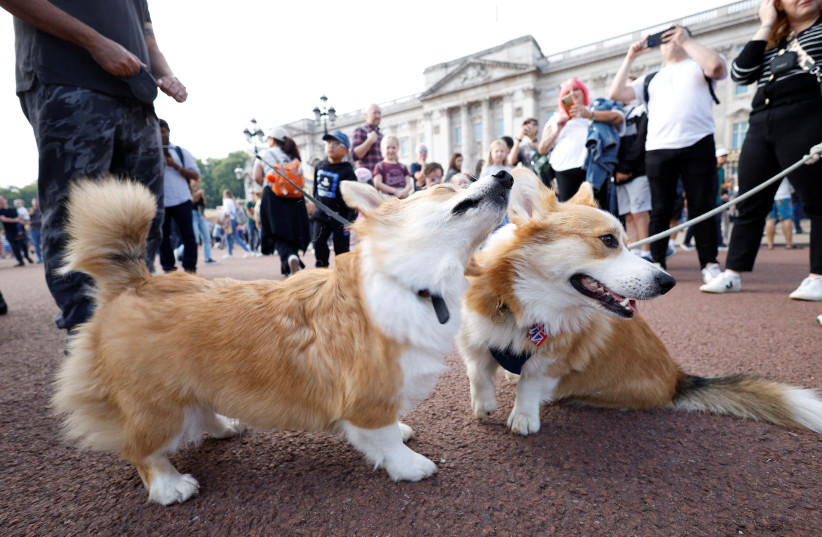Wolves possess the capability of expressing attachment behaviors towards humans just like dogs according to a report published Tuesday.
Domesticated animals are widely assumed to show more affection towards humans than their undomesticated counterparts. More specifically, dogs have a remarkable ability to form close relationships with humans, a bond including complete emotional dependency.
A report published in the peer-reviewed journal Ecology and Evolution by scientists at Stockholm University in Sweden shows a similarity between dogs and wolves' through their ability to show affectionate behavior towards their human caregivers.
“Together, our results suggest that wolves can show attachment behaviors toward humans comparable to those of dogs,” writes lead study author Christina Hansen Wheat, PhD in Ethology from Stockholm University.
"I do not believe that this has ever been shown to be the case for wolves before and this also complements the existence of a strong bond between the animals and the familiar person.”
Christina Hansen Wheat
<br>Testing emotional dependency
The scientists gave 12 dogs and 10 wolves a behavioral test. This behavioral test was specifically designed to measure attachment behaviors in candids, which are members of the Canidae family of dog-like carnivores.

“We used the standardized Strange Situation Test to investigate attachment behavior expressed in wolves and dogs hand-raised and socialized under standardized and identical conditions up until the age of testing,” writes Wheat.
The findings served as evidence contradicting the hypothesis that it was only after humans domesticated dogs that the abilities necessary for animals to form attachments with humans came about.
“We felt that there was a need to thoroughly test this,” says Wheat. “Together with earlier studies making important contributions to this question, I think it is now appropriate to entertain the idea that if variation in human-directed attachment behavior exists in wolves, this behavior could have been a potential target for early selective pressures exerted during dog domestication.”
Wheat and her team raised dog and wolf puppies from 10 days old and put them through a series of behavioral tests in order to examine how domestication affects behavior. One of the tests, the Strange Situation Test, consists of a stranger and a familiar person taking turns entering and exiting the room. This was supposed to create a stressful and unstable environment for the puppies which would hopefully stimulate attachment behaviors.
<br><br>Do wolves treat familiar people differently than strangers?
The scientists hoped to see if the dogs and wolves both discriminated between the stranger and familiar person. If so, the results would show that this ability is not unique to dogs, further proving that it hasn't evolved only in dogs.
“That was exactly what we saw,” says Wheat.
During the test, the 23-week-old dogs and wolves were alike in discriminating between a stranger and a familiar person. The wolves also proved to show similar attachment behaviors towards the familiar person as the dogs.
Furthermore, only the wolves have elevated stress levels during the test which was shown through their behavior. When the familiar person was present, the wolves' stress levels decreased.
“It was very clear that the wolves, as the dogs, preferred the familiar person over the stranger,” says Wheat. “But what was perhaps even more interesting was that while the dogs were not particularly affected by the test situation, the wolves were. They were pacing the test room. However, the remarkable thing was that when the familiar person, a hand-raiser that had been with the wolves all their lives, re-entered the test room the pacing behavior stopped, indicating that the familiar person acted as a social stress buffer for the wolves."
They continued, saying "I do not believe that this has ever been shown to be the case for wolves before and this also complements the existence of a strong bond between the animals and the familiar person.”
The similarities found between dogs and wolves may help dog owners understand where some of their dogs' behaviors come from. The scientists plan to continue to study more about dogs’ and wolves' behavioral similarities and differences.
“This body of work now highlights that wolves across a wide range of ontogenetic stages, and not just young wolf puppies, possess this capability,” writes Wheat. “Together, the collective evidence from these wolf studies strongly suggests that this behavioral phenotype exists as standing variation in ancestral populations of the domestic dog, hence the narrative that the ability to express attachment behavior toward humans is exclusive to dogs is no longer tenable.”
